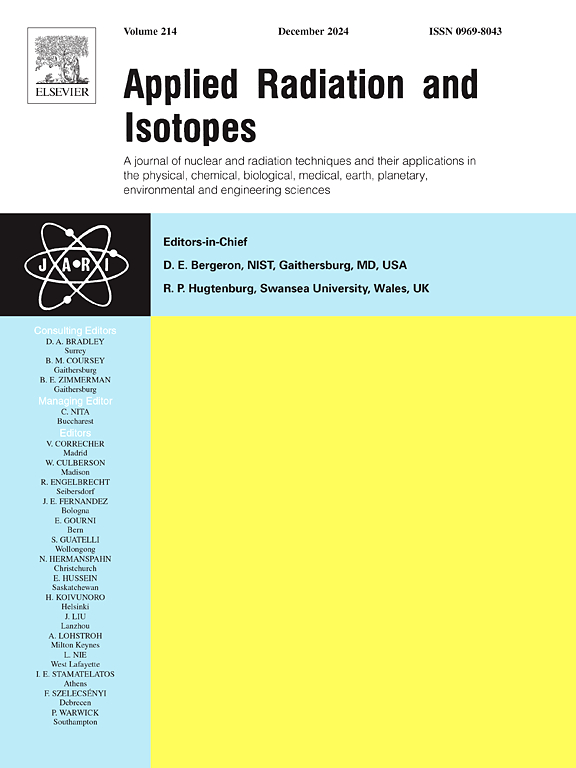印度旁遮普省曼萨地区地下水铀污染评价及SnO2修复
IF 1.8
3区 工程技术
Q3 CHEMISTRY, INORGANIC & NUCLEAR
引用次数: 0
摘要
水中大量存在的铀有可能造成严重的放射性和化学毒性,从而可能导致影响肾脏、大脑、肝脏、心脏和其他器官的严重健康问题。因此,对水源中铀水平的一致评估和开发有效的提取修复技术已经引起了全球的重大兴趣。本研究对旁遮普省曼萨地区地下水铀污染进行了评价,结果显示该地区地下水铀污染平均浓度为95.46 μg/L。大约68%的地下水样本的铀含量高于世界卫生组织2011年设定的30 μg/L的上限。为了修复U(VI),采用溶胶-凝胶法合成SnO2,在最佳吸附参数:pH(6)、吸附剂用量(0.5 g/L)、接触时间(90 min)下,最大Langmuir吸附量为163.07 mg/g。因此,制备的SnO2对于铀污染地下水样品的修复是高效有效的。本文章由计算机程序翻译,如有差异,请以英文原文为准。
Assessment of uranium contamination in groundwater of Mansa district, Punjab (India) and its remediation using SnO2
The high prevalence of uranium in water has the potential to cause significant radio and chemotoxicity, which could lead to serious health issues affecting the kidneys, brain, liver, heart and other organs. Consequently, the consistent assessment of U levels in water sources and the development of effective remediation techniques for its extraction have garnered significant global interest. The present work was conducted to evaluate uranium contamination in groundwater of Mansa district in SW-Punjab region and observed a mean uranium concentration of 95.46 μg/L. About 68 % of the groundwater samples had uranium levels higher than the 30 μg/L limit set by the WHO in 2011. For the remediation of U(VI), SnO2 was synthesized using the sol-gel method and showed a maximum Langmuir adsorption capacity of 163.07 mg/g under optimal adsorption parameters: pH (6), adsorbent dosage (0.5 g/L), and contact period (90 min). Hence, prepared SnO2 was identified as efficient and effective for the remediation of uranium-contaminated groundwater samples.
求助全文
通过发布文献求助,成功后即可免费获取论文全文。
去求助
来源期刊

Applied Radiation and Isotopes
工程技术-核科学技术
CiteScore
3.00
自引率
12.50%
发文量
406
审稿时长
13.5 months
期刊介绍:
Applied Radiation and Isotopes provides a high quality medium for the publication of substantial, original and scientific and technological papers on the development and peaceful application of nuclear, radiation and radionuclide techniques in chemistry, physics, biochemistry, biology, medicine, security, engineering and in the earth, planetary and environmental sciences, all including dosimetry. Nuclear techniques are defined in the broadest sense and both experimental and theoretical papers are welcome. They include the development and use of α- and β-particles, X-rays and γ-rays, neutrons and other nuclear particles and radiations from all sources, including radionuclides, synchrotron sources, cyclotrons and reactors and from the natural environment.
The journal aims to publish papers with significance to an international audience, containing substantial novelty and scientific impact. The Editors reserve the rights to reject, with or without external review, papers that do not meet these criteria.
Papers dealing with radiation processing, i.e., where radiation is used to bring about a biological, chemical or physical change in a material, should be directed to our sister journal Radiation Physics and Chemistry.
 求助内容:
求助内容: 应助结果提醒方式:
应助结果提醒方式:


